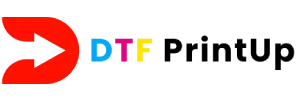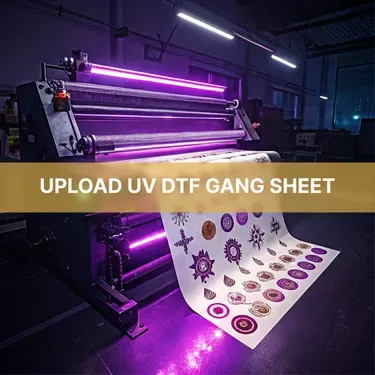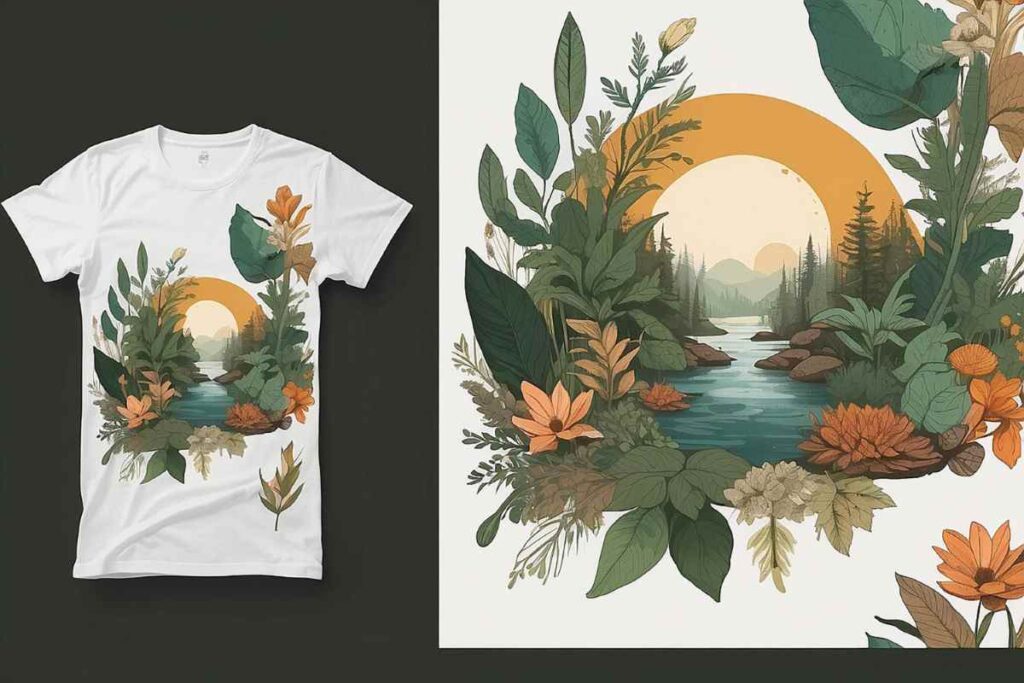In the rapidly evolving realm of textile printing, **UV DTF Gangheet** stands out as a groundbreaking innovation that merges quality with eco-consciousness. This advanced printing method utilizes cutting-edge UV printing technology to produce vibrant and durable prints on a variety of fabrics, catering to the increasing demand for sustainable solutions. With environmental concerns at the forefront, businesses are keen to embrace UV DTF Gangheet as it significantly reduces waste and chemical usage compared to traditional textile printing methods. Beyond its environmental benefits, this technology promises cost-effectiveness and efficiency, addressing the need for quicker turnaround times in a fast-paced market. As we explore the advantages and features of UV DTF Gangheet, it’s clear that this printing process is set to redefine the future of eco-friendly textile printing.
UV DTF Gangheet technology, also known as Direct-to-Film printing, represents a significant leap in the printing industry by integrating advanced ultraviolet ink with efficient transfer techniques. This approach specializes in producing richly colored designs on various textiles while maintaining minimal environmental impact, marking a shift towards more sustainable practices in fabric printing. By embracing alternatives like sustainable printing methods, businesses not only enhance their product offerings but also align with the growing consumer demand for eco-friendly solutions. The versatility of this innovative process extends across a range of fabrics, making it a go-to choice for companies eager to adapt to modern printing challenges. With its blend of durability and vibrant color output, UV DTF printing is poised to revolutionize the landscape of textile applications.
Exploring the Benefits of UV DTF Gangheet Technology
UV DTF Gangheet technology revolutionizes the textile printing sector by offering a multitude of benefits that cater to modern needs. One of the standout features is its eco-friendliness. Unlike traditional methods that often rely on toxic chemicals, UV DTF printing utilizes specially formulated inks that minimize environmental impact. This leads to a sustainable printing option that appeals to environmentally conscious brands and consumers. Furthermore, the process reduces ink wastage significantly, allowing businesses to achieve vibrant prints more economically.
In addition to environmental considerations, UV DTF Gangheet provides enhanced versatility across fabric types. Whether printing on cotton, polyester, or blended materials, this technology excels in delivering high-quality results that retain vibrancy and detail. The durability of the prints means products can withstand multiple washes without fading, making it an ideal choice for fashion and custom apparel. Brands looking to maintain a competitive edge can leverage these attributes to appeal to a discerning market.
Understanding Eco-Friendly Practices in UV DTF Printing
As the demand for sustainable practices rises, UV DTF printing shines as a frontrunner in eco-friendly textile solutions. The technology’s use of UV ink allows for prints that are extremely durable, reducing the need for frequent replacements. This longevity not only benefits the environment by curbing waste but also lowers costs for businesses, making it a financially viable option. Furthermore, the printing process generates significantly less waste and water compared to traditional dyeing and printing methods.
Moreover, many leading companies within the printing industry are recognizing the shift towards eco-friendly practices. By investing in UV DTF Gangheet technology, brands can create marketing narratives centered around sustainability. This not only enhances brand image but also attracts a growing customer base that values ethical production methods, thereby creating a win-win scenario for profitability and environmental stewardship.
Innovations Shaping the Future of UV DTF Gangheet
The landscape of UV DTF printing is rapidly evolving, with ongoing innovations that are reshaping the textile industry. Recent advancements in printer technology, including modular designs that integrate multiple functions such as rotary and flatbed capabilities, enable users to diversify their capabilities. For instance, innovative models like the EufyMake E1 offer a range of options for creatives, simplifying the process of producing complex prints and significantly enhancing user efficiency.
In addition, the advent of user-friendly compact devices is democratizing access to UV DTF technology for small businesses and individual entrepreneurs. These machines offer professional-quality outputs without the complexity often associated with industrial printers, making it easier for newcomers to enter the market. As brands continue to innovate and expand their DTF printing capabilities, we can expect to see an influx of unique textile products that cater to diverse consumer preferences.
Cost Efficiency and Speed in UV DTF Production
One of the defining features of UV DTF Gangheet technology is its ability to enhance productivity and reduce costs in textile printing. The efficiency of this process comes from its direct printing capabilities on films, which can then be easily transferred to fabrics. This method significantly speeds up production times, allowing businesses to meet rising demands without sacrificing quality. Consequently, brands can respond to market changes more swiftly, giving them a competitive edge.
Understanding the cost implications of adopting UV DTF printing is also essential for businesses. By minimizing waste and maximizing print quality, companies can achieve a higher return on investment compared to traditional methods. This latent cost-saving aspect, combined with faster turnaround times, empowers brands to offer more competitive pricing and enhance customer satisfaction, fostering long-term loyalty.
Durability and Quality Assurance in Textile Printing
When it comes to the quality of prints, UV DTF Gangheet technology stands out due to its exceptional durability. Unlike traditional textile printing methods that may experience fading or wear after multiple washes, UV DTF prints maintain their integrity and vibrancy over time. This resilience is crucial for businesses that seek to uphold a high standard of quality that consumers expect from modern apparel, especially in the fast-paced fashion industry.
Moreover, the combination of high-resolution capabilities with UV ink ensures that even intricate designs can be printed with impressive clarity. This focus on quality not only improves customer satisfaction but also drives repeat business, establishing a brand’s reputation for excellence in the competitive textile market. Brands that prioritize quality assurance through UV DTF Gangheet printing are better positioned to thrive in today’s consumer-driven landscape.
The Impact of UV DTF Gangheet on Textile Industry Trends
The rise of UV DTF Gangheet technology reflects broader trends within the textile industry, particularly the push towards sustainability and high-quality outputs. As more consumers demand environmentally friendly products, companies that adopt this technology are positioning themselves as leaders in the shift towards responsible production practices. This not only helps in meeting regulatory standards but also enhances brand perception among conscious buyers.
Additionally, the integration of UV DTF technology into existing printing operations signifies a pivotal moment for manufacturers. By embracing innovative practices, businesses can capitalize on market trends that favor efficiency and cost-effectiveness, ultimately shaping the future of textile printing. As the industry continues to evolve, those who adapt to these changes will find themselves at the forefront of the next wave of textile innovation.
Frequently Asked Questions
What is UV DTF Gangheet and how does it improve textile printing?
UV DTF Gangheet, or Direct-to-Film Gangheet, combines advanced UV printing technology with the efficiency of DTF printing. This method allows for vibrant prints on various textiles while minimizing waste, making it a sustainable option for modern textile printing needs.
How does UV DTF Gangheet contribute to eco-friendly printing practices?
UV DTF Gangheet utilizes less ink and avoids harmful chemicals often present in traditional printing methods. This eco-friendly printing approach not only reduces environmental impact but also attracts brands focused on sustainable printing solutions.
What types of fabrics can be used with UV DTF Gangheet technology?
UV DTF Gangheet technology is versatile and compatible with a wide range of fabrics, including cotton, polyester, and mixed blends. This makes it ideal for diverse textile applications in the printing industry.
What are the key benefits of using UV DTF Gangheet for businesses?
Businesses benefit from UV DTF Gangheet through its cost-effectiveness, improved efficiency, and high-quality, durable prints. This printing technology reduces production times and increases order fulfillment capacity, crucial in meeting market demands.
How do recent innovations impact UV DTF Gangheet technology in textile printing?
Recent innovations in UV DTF technology, like eco-friendly developments and new printer models, enhance the efficiency and versatility of textile printing, allowing businesses to capitalize on high-quality outputs with reduced environmental impact.
Why should companies consider transitioning to UV DTF Gangheet technology?
Companies should transition to UV DTF Gangheet technology to improve print quality, gain operational efficiency, and align with the rising consumer demand for sustainable and eco-friendly printing practices.
| Key Features | Details |
|---|---|
| Eco-Friendly Approach | Uses less ink and fewer chemicals, reducing environmental impact. |
| Versatility | Compatible with various fabrics like cotton and polyester. |
| Efficiency | Significantly reduces production time with direct film printing. |
| Durability | Resists fading, cracking, and peeling for long-lasting quality. |
| Recent Innovations | New printer models and eco-friendly advancements are emerging. |
Summary
UV DTF Gangheet technology stands at the forefront of textile printing innovation, offering a blend of quality, efficiency, and sustainability. This revolutionary approach not only enhances the print quality through vibrant colors on diverse fabric types but also significantly reduces environmental impact. As businesses shift towards this more eco-conscious method, they can meet consumer demands for durability and rapid production. Embracing UV DTF Gangheet is not just a technological upgrade; it’s a strategic move towards a sustainable future in the textile industry.


